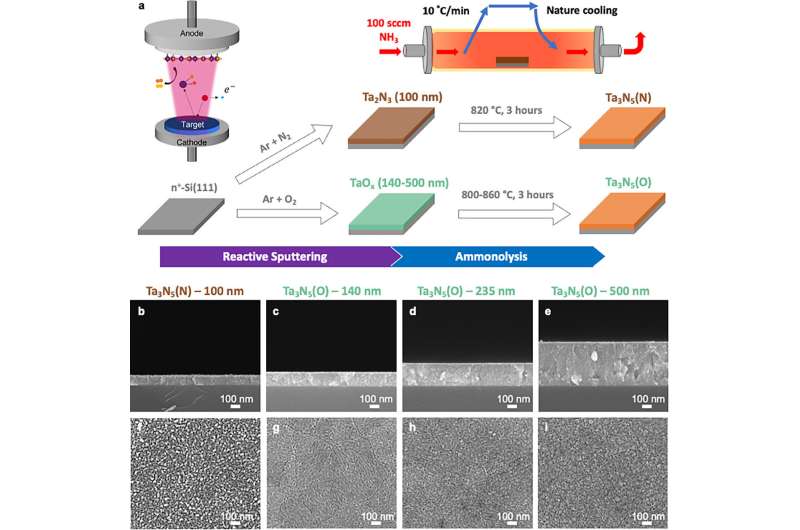Researchers at National Taiwan University have developed a synthesis method that enables just 100 nm of tantalum nitride to outperform much thicker photoanodes, paving the way for scalable, cost-effective solar hydrogen production.

A team of researchers at the Department of Chemistry, National Taiwan University, has developed a synthesis strategy that significantly reduces the material usage in photoelectrochemical water splitting—without compromising performance. The innovation enables a mere 100 nm layer of tantalum nitride (Ta₃N₅) to outperform traditional thick-film photoanodes made with oxide-based precursors.
Ta₃N₅ is a promising semiconductor for converting sunlight into hydrogen due to its visible light absorption and ideal bandgap. However, practical adoption has been limited by its poor charge transport properties, typically requiring thick, tantalum-rich layers. Tantalum is both expensive and scarce, making such approaches unsustainable for scale.
Published in Small, the new method introduces a chemically engineered precursor—bixbyite-type Ta₂N₃—to produce ultrathin, high-efficiency Ta₃N₅ photoanodes on silicon. This metastable precursor readily converts into Ta₃N₅ during thermal processing, forming thin films that display superior light harvesting and charge separation.
Notably, the Ta₂N₃-to-Ta₃N₅ transformation introduces trace subnitride impurities at the silicon interface—an unexpected benefit. These phases are highly conductive and act as efficient channels for extracting photogenerated carriers, addressing a long-standing bottleneck in nitride-based energy devices.
“By engineering the Ta₂N₃ precursor and leveraging its unique interfacial chemistry, we achieved remarkable improvements in photocurrent and efficiency—using far less tantalum,” said lead researcher Chang-Ming Jiang.
Comprehensive structural, optical, and electrochemical analyses confirmed that this interface-engineered approach enables higher performance than thicker, conventional Ta₃N₅ films, while being more sustainable and cost-effective. This advance not only reduces the material footprint of solar hydrogen systems but also offers a scalable route for manufacturing next-gen photoelectrodes. The research highlights the potential of metastable precursor chemistry and interface design in developing efficient, low-cost solutions for light-driven energy conversion. As the push for clean hydrogen intensifies, innovations like this could play a pivotal role in achieving scalable, economically viable solar-to-fuel technologies.

